View microservice details¶
Click the microservice name on the service list page to view the service details and further view the instance list, subscribers, monitoring, interface list, metadata, service governance and other information.
Instance list¶
Log in to the target registry, click Microservice List in the left navigation bar, click the name of the target microservice, and perform subsequent operations before going to the page for details of the microservice.

-
Adjusting the service traffic weight
Provides traffic weight control and threshold protection for service traffic, which helps users protect the service provider cluster from unexpected breakdown. You can click the Edit button of the instance to change the weight of the instance. To increase the traffic volume of the instance, increase the weight. To prevent the instance from receiving traffic, set the weight to 0.
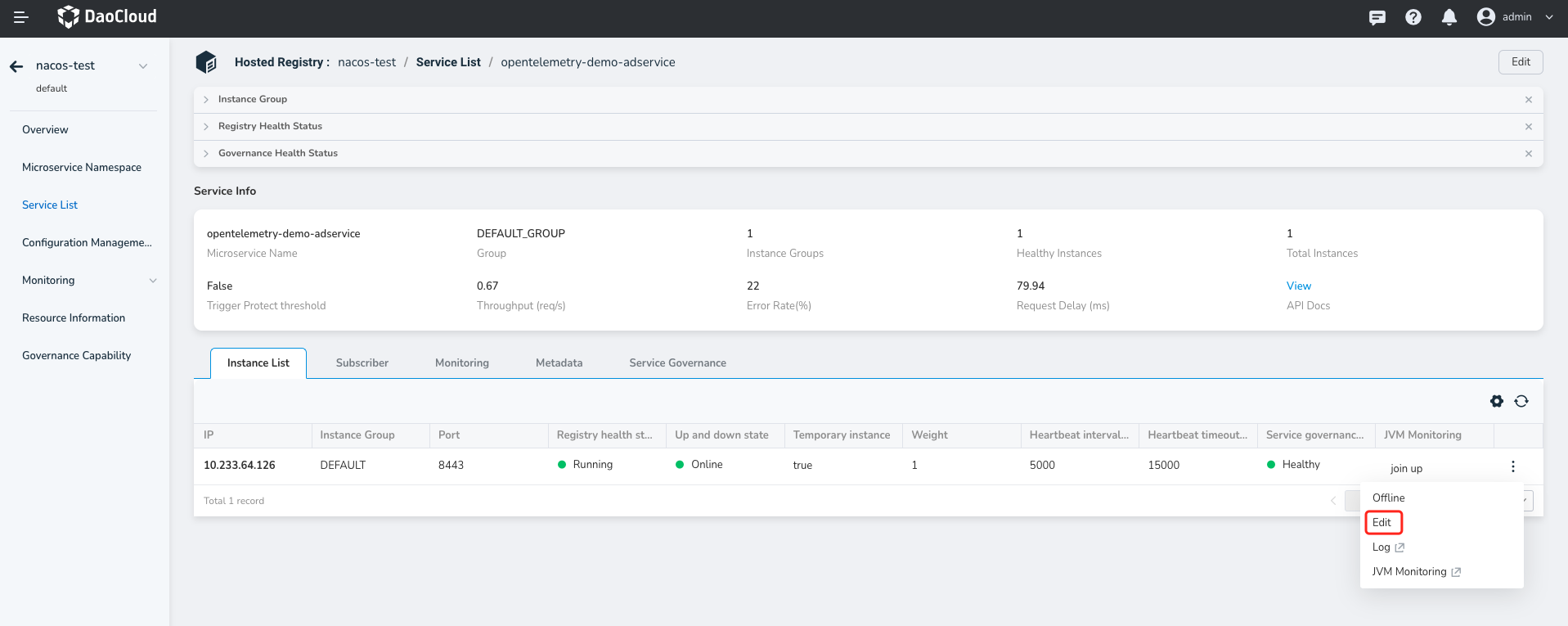
-
Instance up and down
Provides online and offline operations for service instances. In the operation column of the instance list, click Online or Offline of the instance. Offline instances are not included in the healthy instances list.
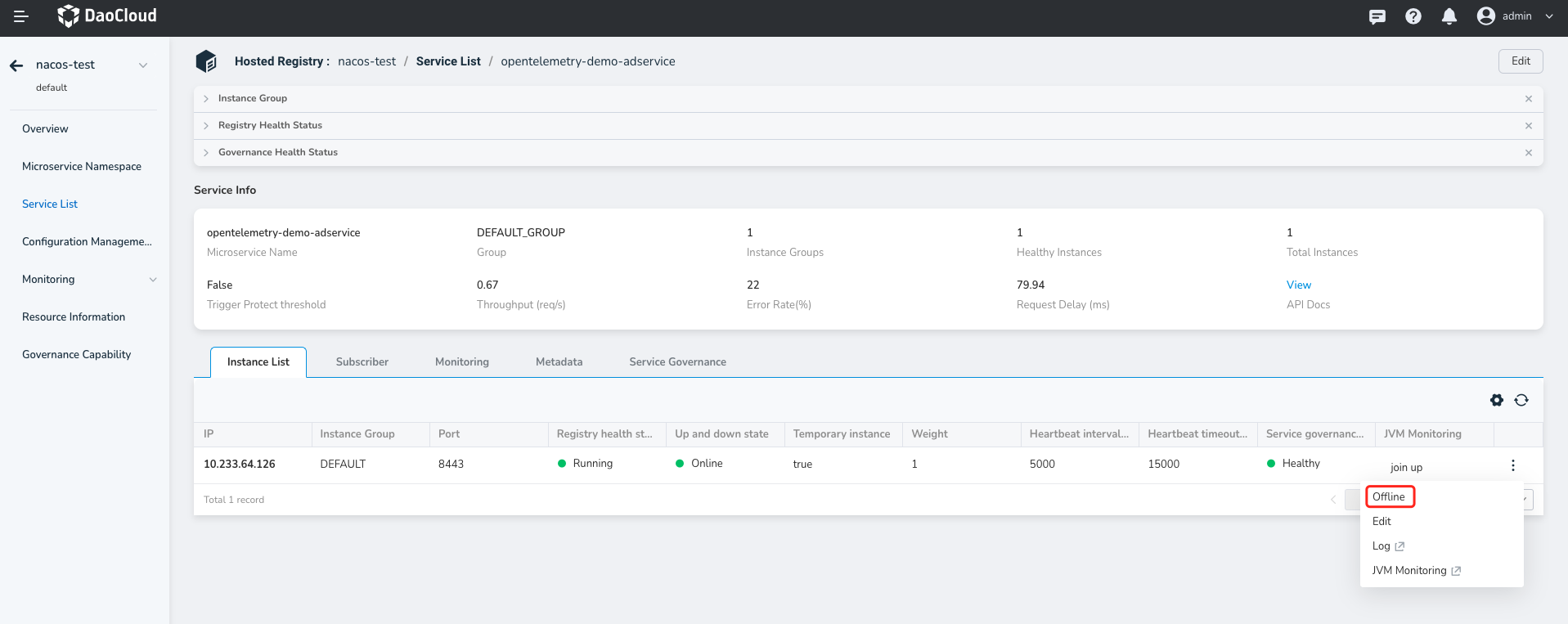
-
Instance details
Click the instance name to access the instance details and view the monitoring and metadata of the instance.
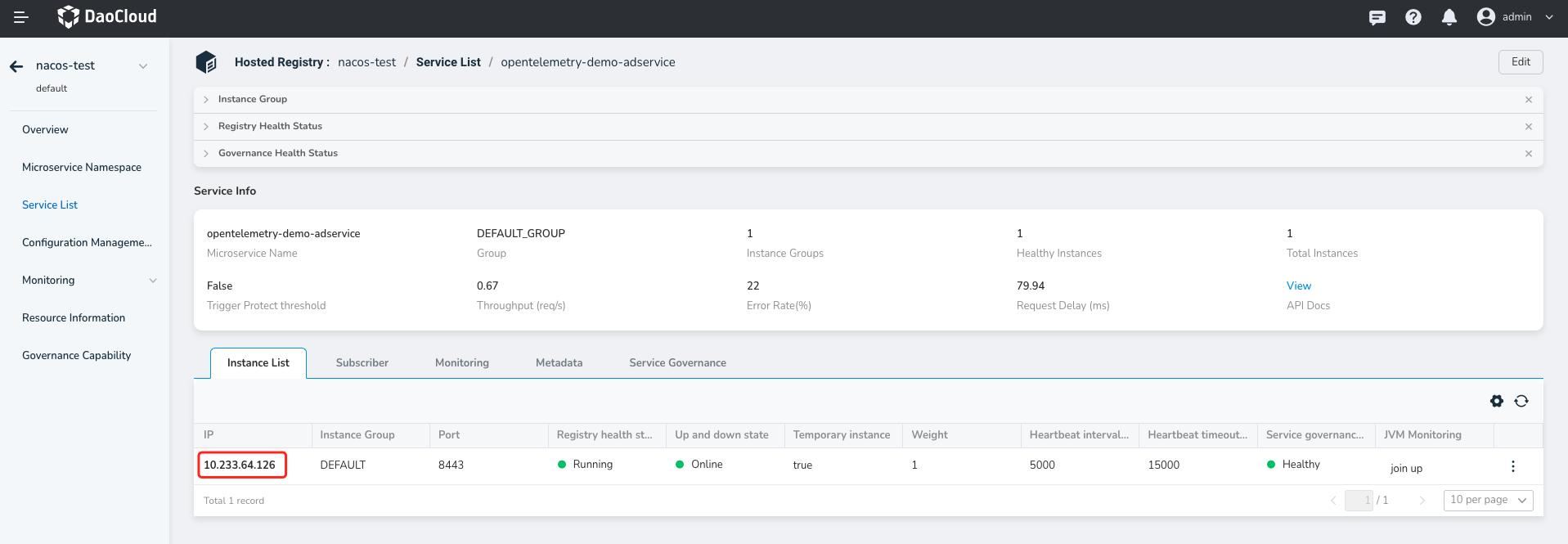
-
Instance monitoring
The instance monitoring feature monitors the status of the service instance, such as the time sequence curves of the request number, error rate, response time, request rate, CPU metric, memory metric, read/write rate, and receive/send rate of the service instance.
In response time, p95 represents that 95% of online requests take less than a certain time.
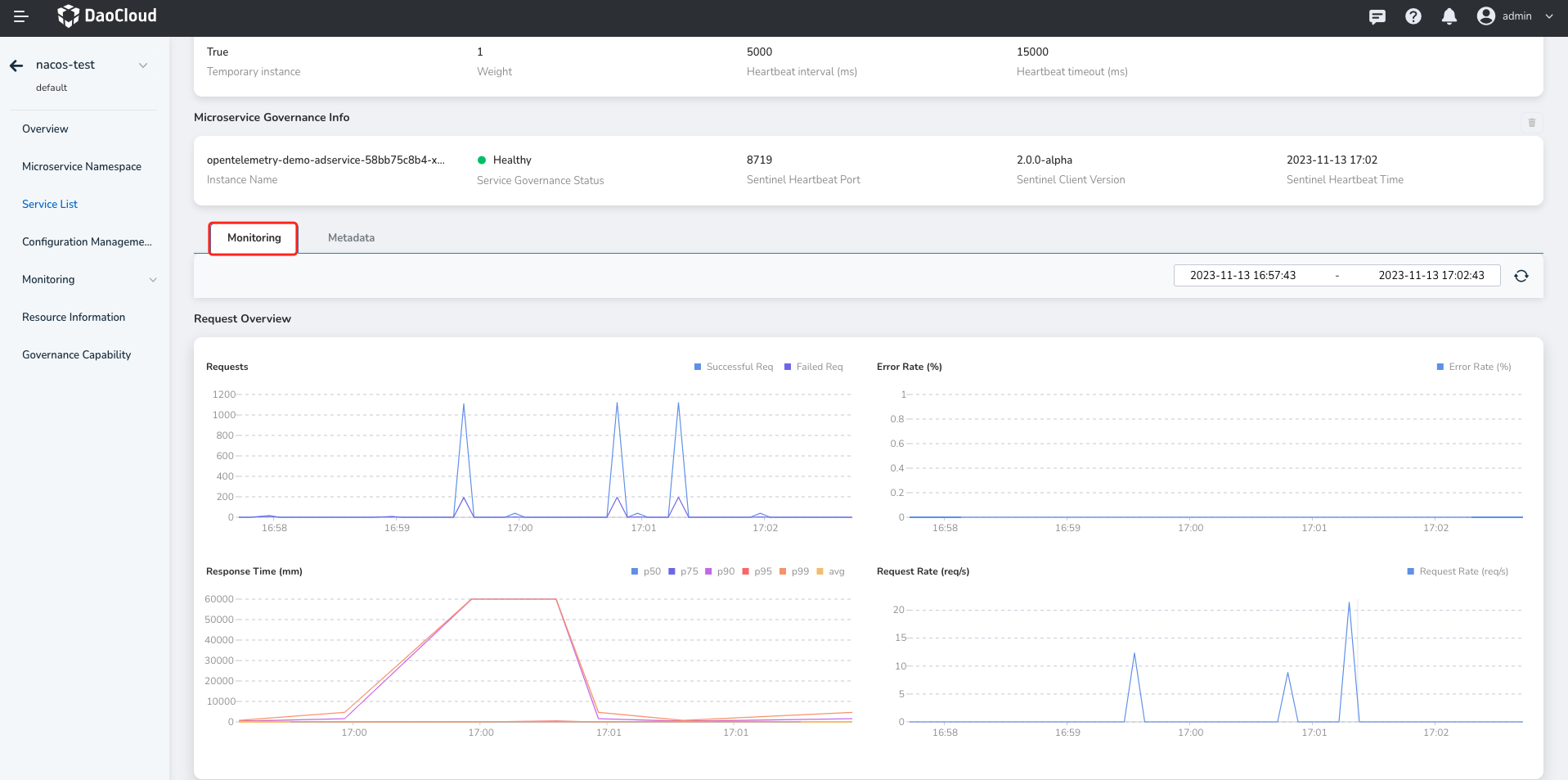
-
Instance metadata
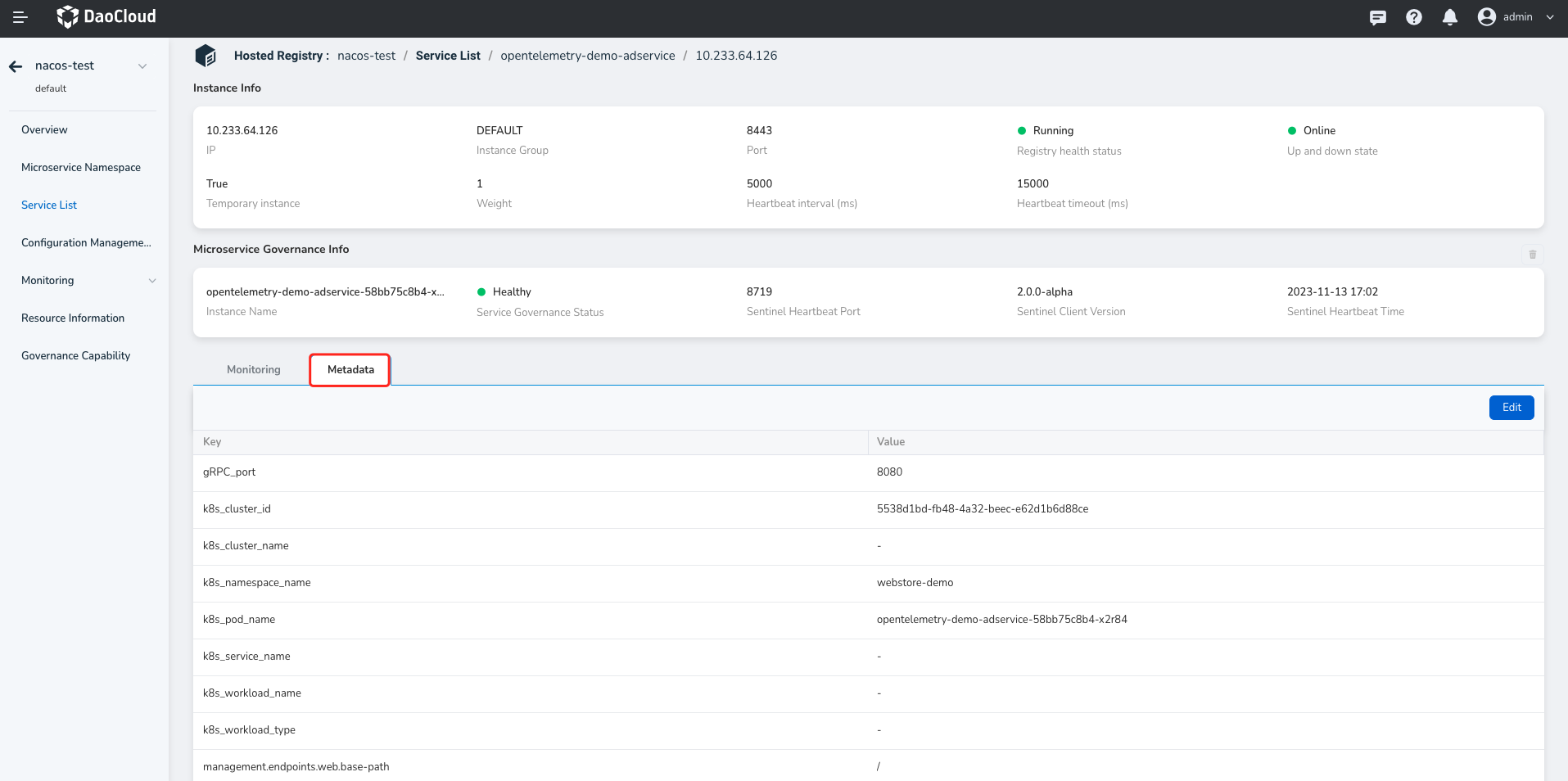
-
subscriber¶
On the subscriber list page, you can view subscriber information, including IP address, port number, client version, and application name.
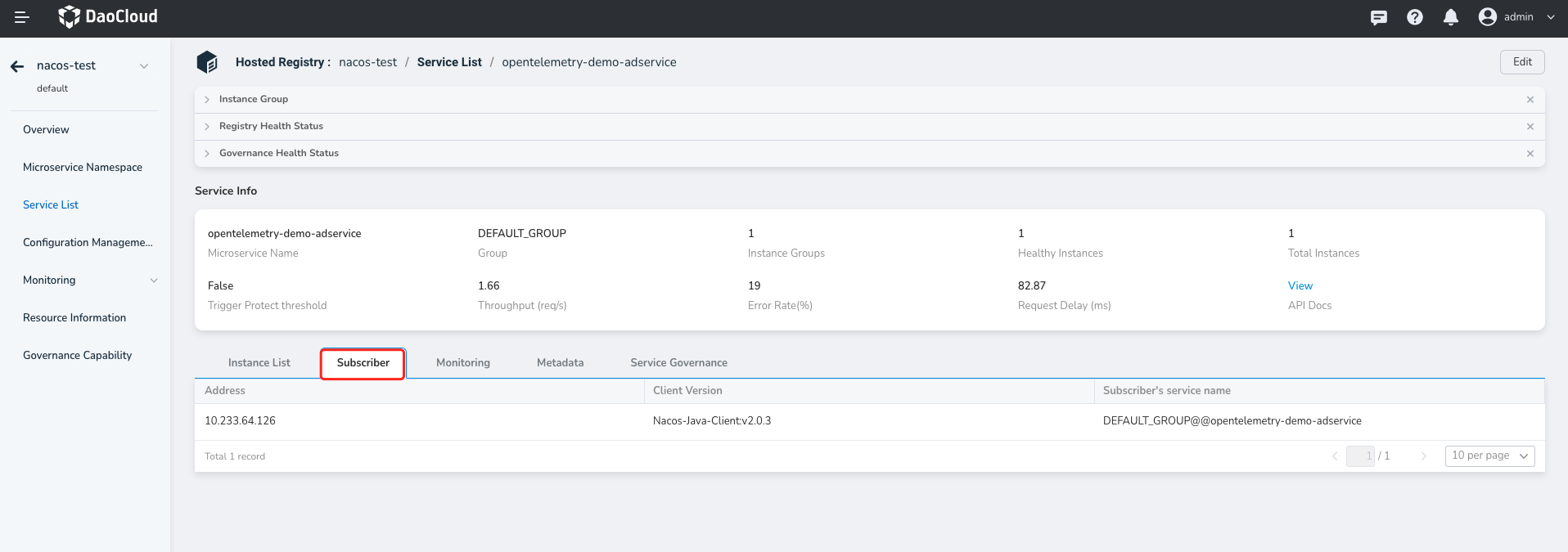
Service monitoring¶
Service monitoring Displays the running status of a microservice in a namespace within a specific time range and determines whether an exception occurs based on microservice monitoring metrics (number of requests, error rate, response time, and request rate).
You can change the time range of monitoring data in the upper right corner of the monitoring chart.
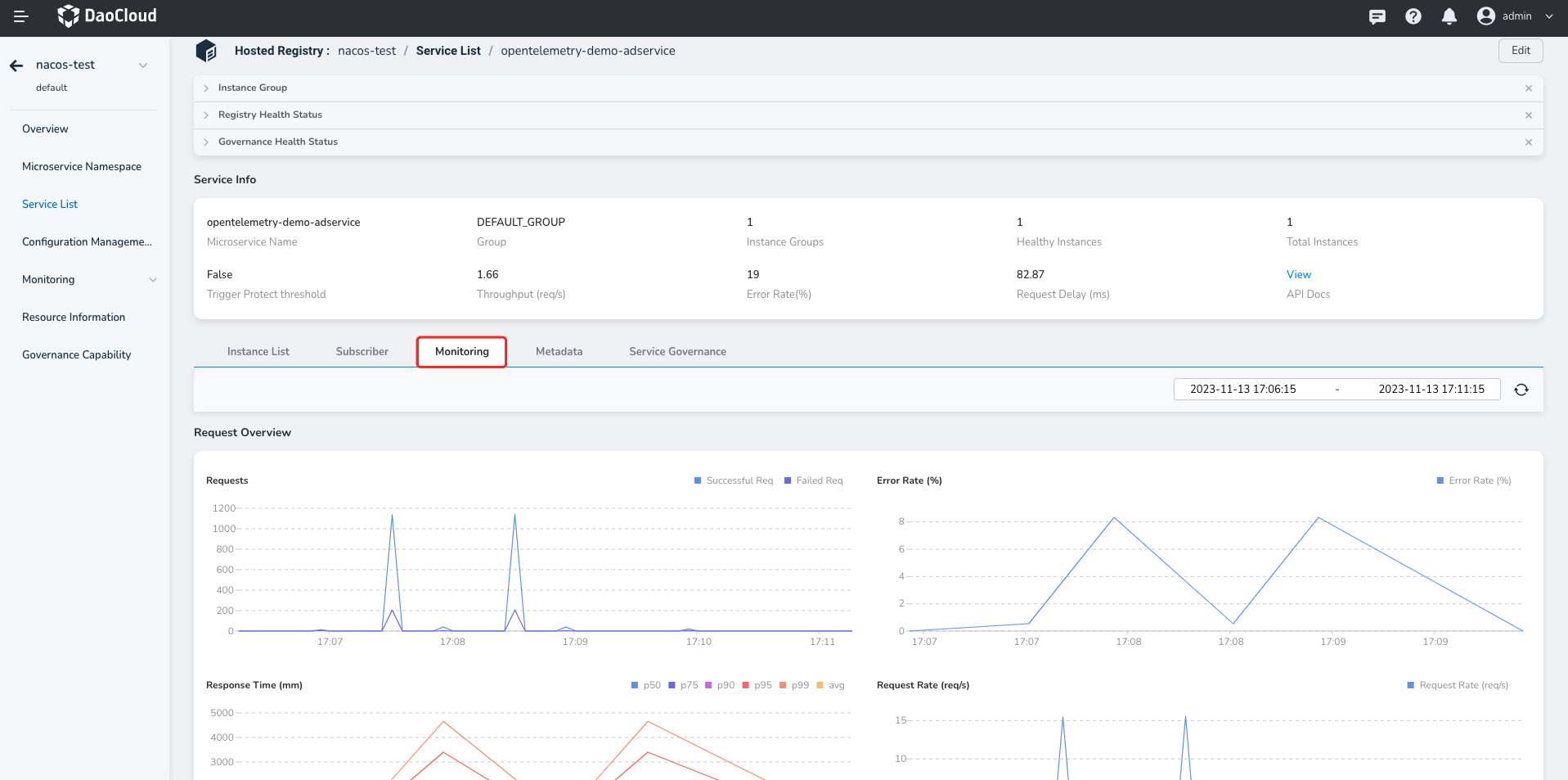
Microservice metadata¶
Provides multiple dimensions of service metadata to help users store customized information. This information is stored as a Key-Value data structure and displayed on the console in the format k1=v1,k2=v2.
Click Edit on the right to modify the metadata.
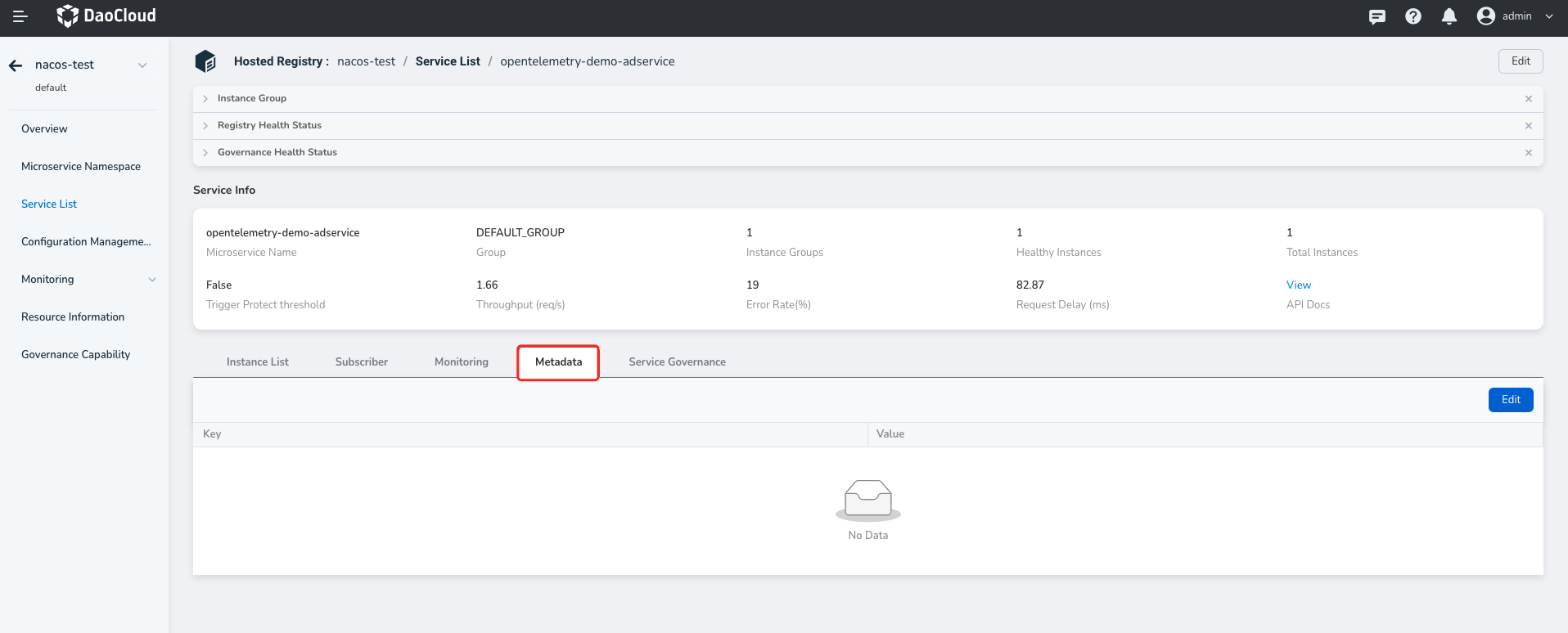
Microservice governance¶
With the microservice governance plug-in enabled, you can create three kinds of governance rules for services: virtual service, target rules, and gateway rules through YAML files or page forms. For more information on microservice governance, see Traffic Governance.
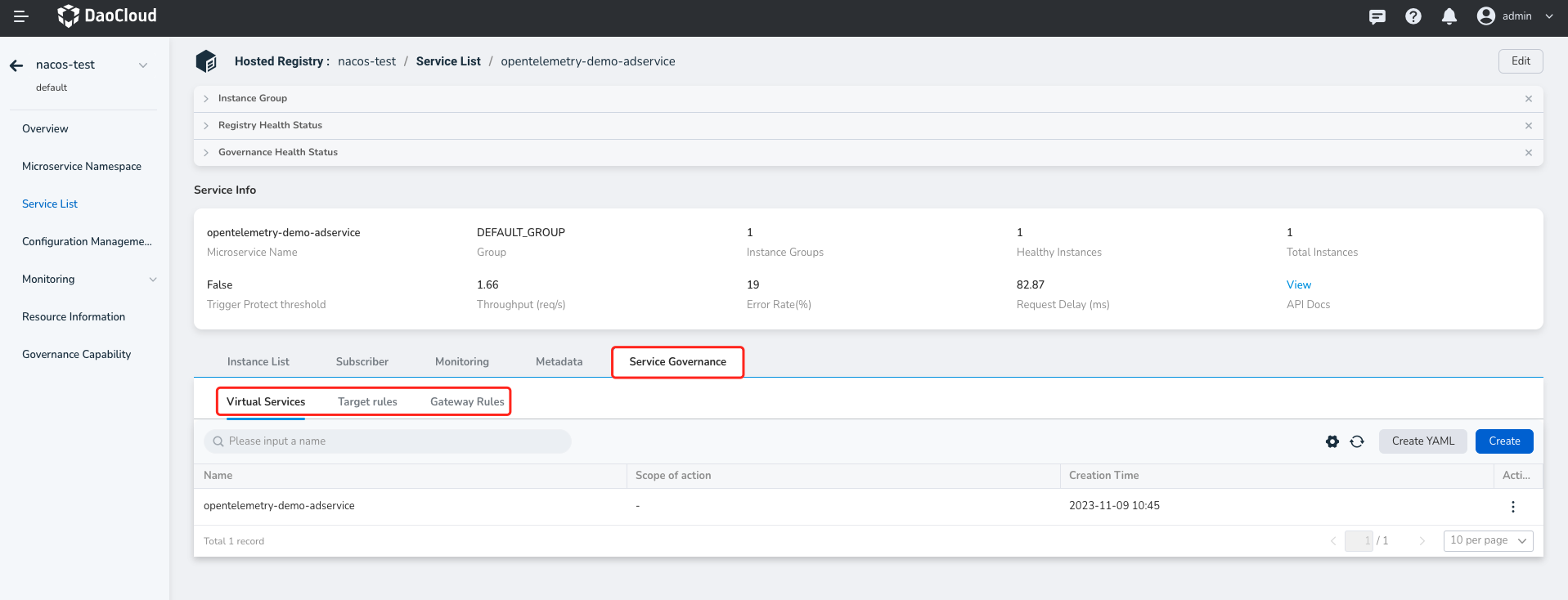
API Docs¶
The interface documentation displays the list of APIs exposed by the service. Click "Import API Docs" on the right to manually enter the API. There are two ways to import: Address to Import and Manual Import.
